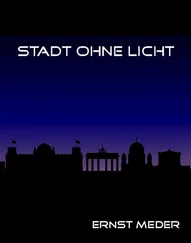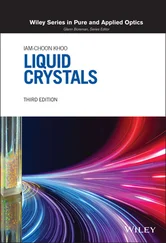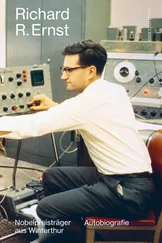(4.101) 
providing
(4.102) 
Equation (4.101)must be solved numerically. A table of solutions can be found in Yeh and Gu (1999).
Two examples are:

Once a in Equation (4.101)has been found, Δ nd / λ and α can be calculated from Equations (4.96)and (4.102). The black state is achieved only for a given λ , which determines d in Equation (4.96); λ = 550 nm and Δ n = 0.05 yield d = 3.19 μm in the first case and d = 18.26 μm in the second case in the table above.
The solutions for normally black reflective cells with α ≠ 0 discussed so far belong to the mixed mode TN cells introduced in Section 4.2.3. For α = 0 Equation (4.81)requires a = l, and from Equation (4.99)tan γ = ∞ or  leading to a twist angle
leading to a twist angle  . The regular TN cell with β = π /2 does not permit a solution for a reflective cell with Iξ = 0 at a given wavelength λ . Therefore, mixed mode TN cells are preferred for reflective TN displays.
. The regular TN cell with β = π /2 does not permit a solution for a reflective cell with Iξ = 0 at a given wavelength λ . Therefore, mixed mode TN cells are preferred for reflective TN displays.
As normally white reflective TN cells are seldom used due to their poorer performance, they are not dealt with here. A description can be found in Yeh and Gu (1999).
4.3 Electronically Controlled Birefringence for the Generation of Colour
We consider the mixed mode TN cell for the angle of the polarizer α = π /4 with the intensity


Figure 4.12The reduced intensity of a mixed mode TN display versus λ = πd Δ n / a with Δ n ( V LC)
in Equation (4.84). The maxima of Isx′ for  are plotted in Figure 4.10. Aplot of Isx′ versus λ = πd Δ n / a with maxima for
are plotted in Figure 4.10. Aplot of Isx′ versus λ = πd Δ n / a with maxima for  is shown in Figure 4.12. By changing Δ n we are able to shift the wavelength λ of the maxima, or in other words, we can shift the colour of the transmitted intensity. The birefringence Δ n = n ||− n ┴= ne − n 0can be changed by applying a voltage VLC , which gradually tilts the LC molecules in Figure 4.13forΔ ε > 0 from the homogeneous alignment in the field-off state to the homeotropic alignment. This effect is called Electronically Controlled Birefringence (ECB). Normally incident light in Figure 4.13always experiences the same index n ┴, whereas n ||changes with the tilt angle Θ e( V LC), which depends upon V LC. In Chapter 6, n ||(Θ e) will be derived as
is shown in Figure 4.12. By changing Δ n we are able to shift the wavelength λ of the maxima, or in other words, we can shift the colour of the transmitted intensity. The birefringence Δ n = n ||− n ┴= ne − n 0can be changed by applying a voltage VLC , which gradually tilts the LC molecules in Figure 4.13forΔ ε > 0 from the homogeneous alignment in the field-off state to the homeotropic alignment. This effect is called Electronically Controlled Birefringence (ECB). Normally incident light in Figure 4.13always experiences the same index n ┴, whereas n ||changes with the tilt angle Θ e( V LC), which depends upon V LC. In Chapter 6, n ||(Θ e) will be derived as
(4.103) 
The dependence of Θ eon V LCcan be determined from the mechanical properties of the LC material, which is not discussed further here. The result is a voltage-dependent birefringence
(4.104) 
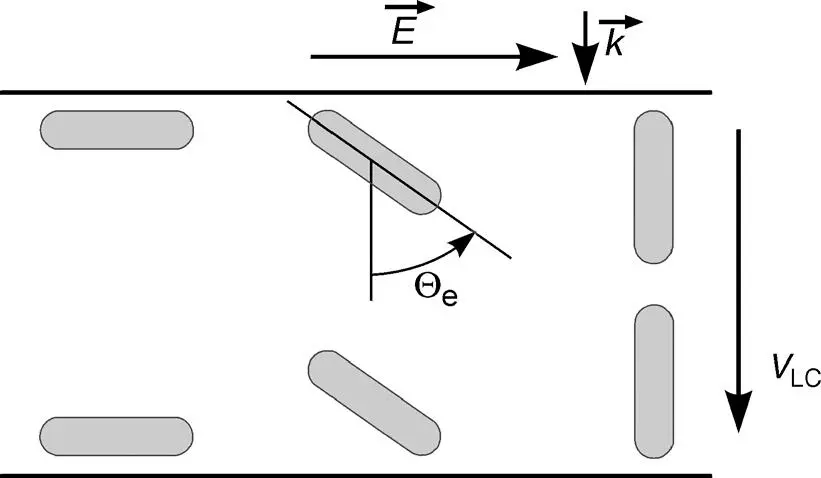
Figure 4.13The tilt of the LC molecules under the influence of a voltage V LCfor Δ ε > 0
Figure 4.12shows the intensity  for the field-free state with Δ n (0) in Figure 4.10and for a Δ n ( V LC) = (1/2)Δ n (0) with dashed lines as an example. Figure 4.9shows measured transmission curves of an STN display versus λ , with V LCas a parameter.
for the field-free state with Δ n (0) in Figure 4.10and for a Δ n ( V LC) = (1/2)Δ n (0) with dashed lines as an example. Figure 4.9shows measured transmission curves of an STN display versus λ , with V LCas a parameter.
The generation of colour by ECB replaces the colour filter by applying an individual voltage to each pixel corresponding to the desired colour. The achievable colours are not fully saturated because the spectral curves are not narrow enough, and neighbouring colours overlap. The reflective cells are constructed according to Section 4.2.4.
1 Bodewig, E. (1959) Matrix Calcules, 2nd ed., North Holland, Amsterdam.
2 Degen, W. H. (1980) Physical Properties of Liquid Crystalline Materials. Gordon and Breach, London.
3 Gooch, C. H. and Tarry, H. A. (1974) Optical characteristics of twisted nematic Liquid-Crystal Films. Electronic Lett., 10, January.
4 Grinberg, J. and Jacobson, A. D. (1976) Transmission characteristics of twisted nematic liquid crystal layer. J. Opt. Soc. A, 66(10).
5 Nehring, J. and Kmetz, A. (1979) Ultimate limits for matrix addressing of RMS-responding liquid crystal displays. IEEE Trans. Electron Dev., ED-26, (Also Ultimate limits for rms-addressing. In: The Physics and Chemistry of Liquid Crystal Devices, Plenum Press, NY, 1980.)
6 Rosenbluth, A. E. et al. (1998) Contrast properties of reflective liquid crystal light valves in projection displays. IBM J. Res. Dev. May–July.
7 Schadt, M. and Helfrich, W. (1971) Voltage-dependent optical activity of a twisted nematic liquid crystal. Appl. Phys. Lett., 18.
8 Scheffer, T. J. and Nehring, J. (1998) Supertwisted nematic LCDs. SID Lecture notes to Seminar M-6, vol. 1, May 1998, SID-Symposium in Anaheim, CA.
9 Specht, J. (2000) Reflektive TN-Displays mit einem Polarisator. Master Thesis, Universitaet Stuttgart.
10 Yeh, P. (1988) Optical Waves in Layered Media. John Wiley & Sons, Chichester.
11 Yeh, P. and Gu, C. (1999) Optics of Liquid Crystal Displays. John Wiley & Sons, Chichester.
Конец ознакомительного фрагмента.
Текст предоставлен ООО «ЛитРес».
Прочитайте эту книгу целиком, купив полную легальную версию на ЛитРес.
Читать дальше
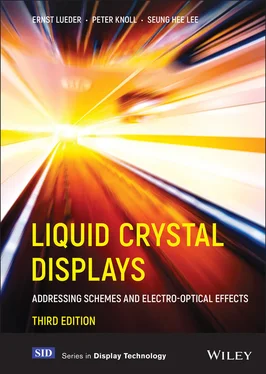



 leading to a twist angle
leading to a twist angle  . The regular TN cell with β = π /2 does not permit a solution for a reflective cell with Iξ = 0 at a given wavelength λ . Therefore, mixed mode TN cells are preferred for reflective TN displays.
. The regular TN cell with β = π /2 does not permit a solution for a reflective cell with Iξ = 0 at a given wavelength λ . Therefore, mixed mode TN cells are preferred for reflective TN displays.

 are plotted in Figure 4.10. Aplot of Isx′ versus λ = πd Δ n / a with maxima for
are plotted in Figure 4.10. Aplot of Isx′ versus λ = πd Δ n / a with maxima for  is shown in Figure 4.12. By changing Δ n we are able to shift the wavelength λ of the maxima, or in other words, we can shift the colour of the transmitted intensity. The birefringence Δ n = n ||− n ┴= ne − n 0can be changed by applying a voltage VLC , which gradually tilts the LC molecules in Figure 4.13forΔ ε > 0 from the homogeneous alignment in the field-off state to the homeotropic alignment. This effect is called Electronically Controlled Birefringence (ECB). Normally incident light in Figure 4.13always experiences the same index n ┴, whereas n ||changes with the tilt angle Θ e( V LC), which depends upon V LC. In Chapter 6, n ||(Θ e) will be derived as
is shown in Figure 4.12. By changing Δ n we are able to shift the wavelength λ of the maxima, or in other words, we can shift the colour of the transmitted intensity. The birefringence Δ n = n ||− n ┴= ne − n 0can be changed by applying a voltage VLC , which gradually tilts the LC molecules in Figure 4.13forΔ ε > 0 from the homogeneous alignment in the field-off state to the homeotropic alignment. This effect is called Electronically Controlled Birefringence (ECB). Normally incident light in Figure 4.13always experiences the same index n ┴, whereas n ||changes with the tilt angle Θ e( V LC), which depends upon V LC. In Chapter 6, n ||(Θ e) will be derived as


 for the field-free state with Δ n (0) in Figure 4.10and for a Δ n ( V LC) = (1/2)Δ n (0) with dashed lines as an example. Figure 4.9shows measured transmission curves of an STN display versus λ , with V LCas a parameter.
for the field-free state with Δ n (0) in Figure 4.10and for a Δ n ( V LC) = (1/2)Δ n (0) with dashed lines as an example. Figure 4.9shows measured transmission curves of an STN display versus λ , with V LCas a parameter.





